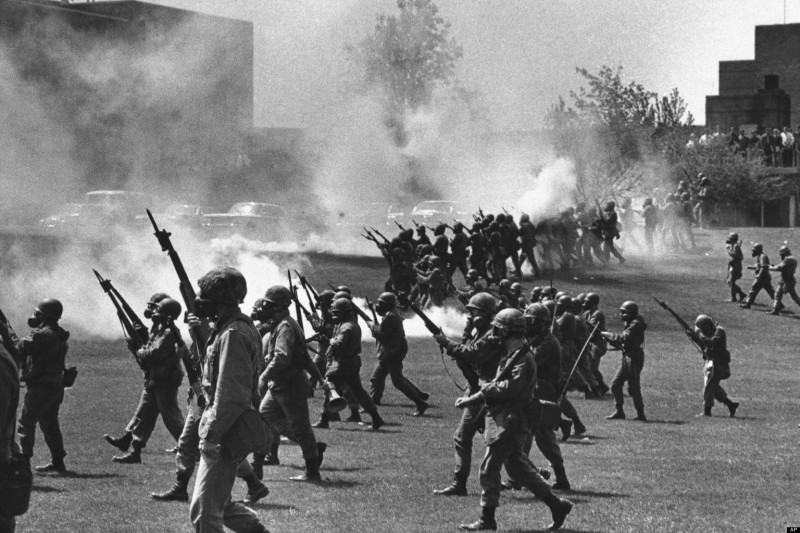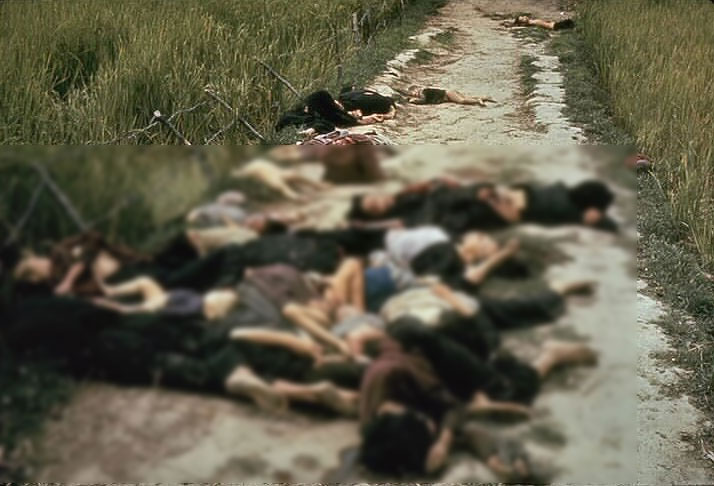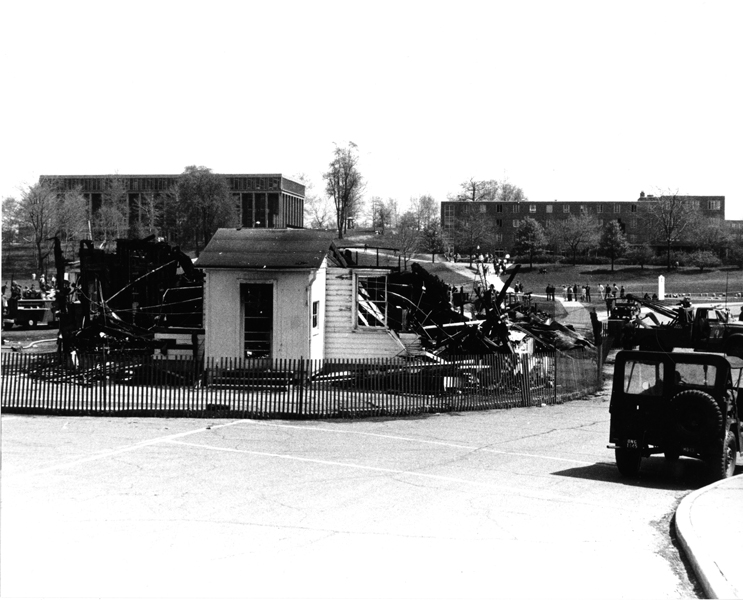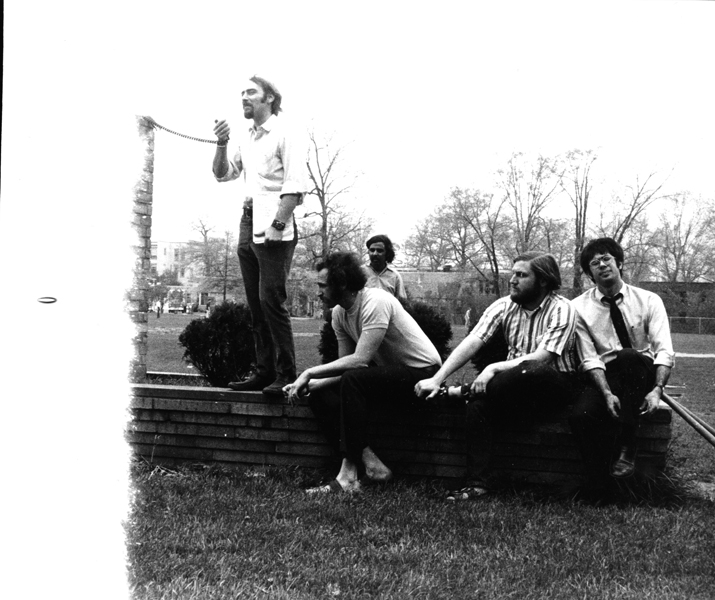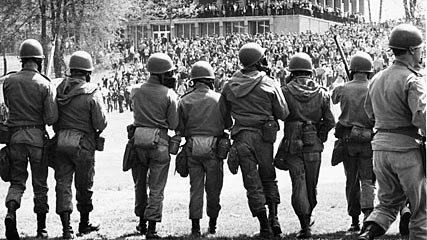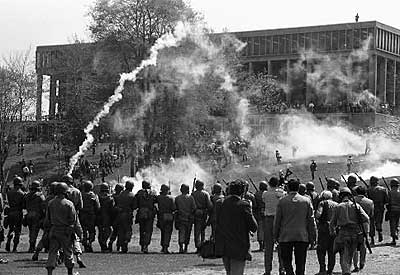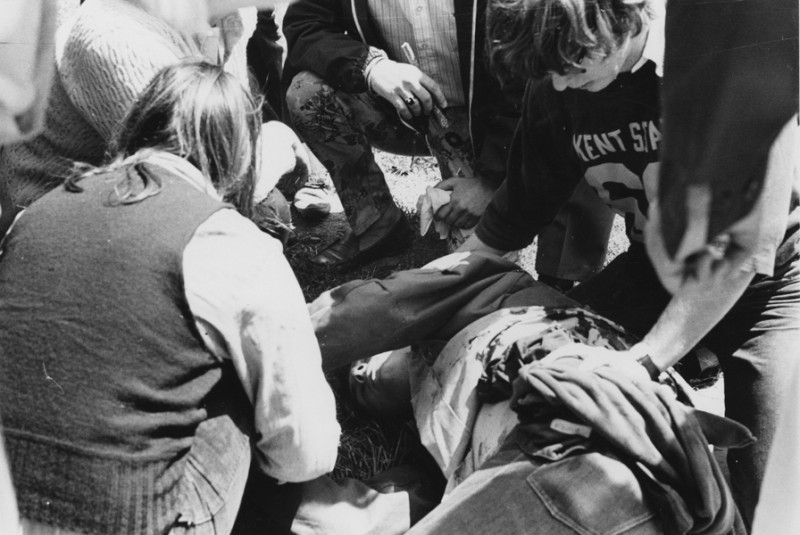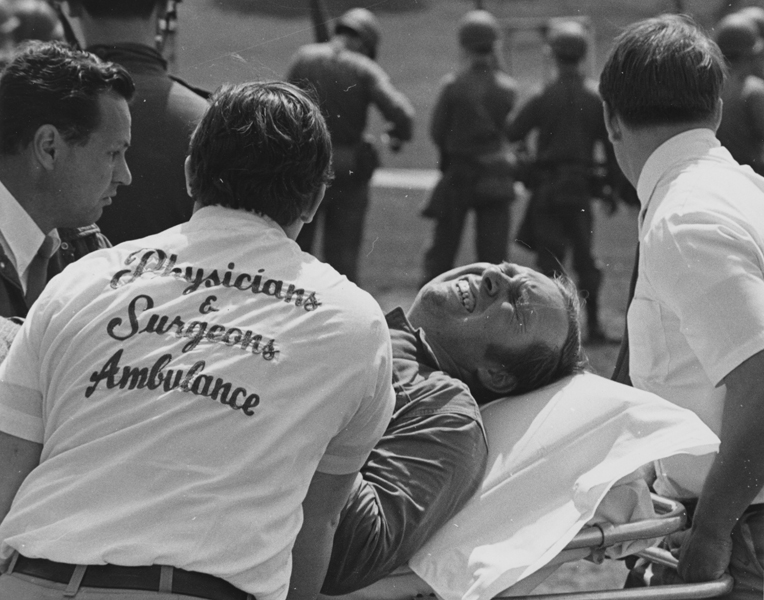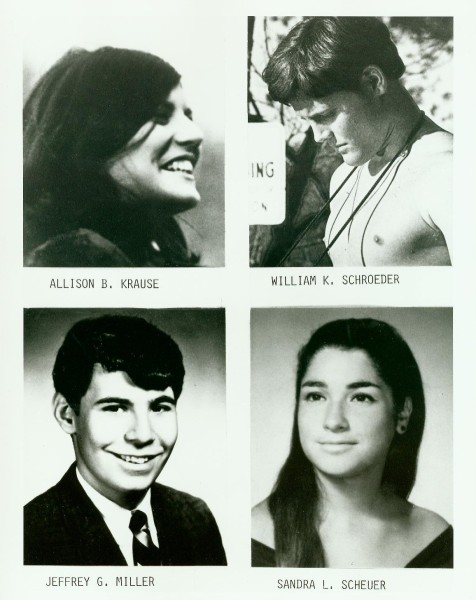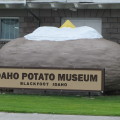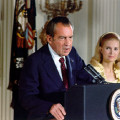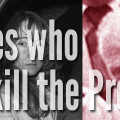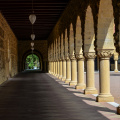What to Know About The 1970 Shootings at Kent State
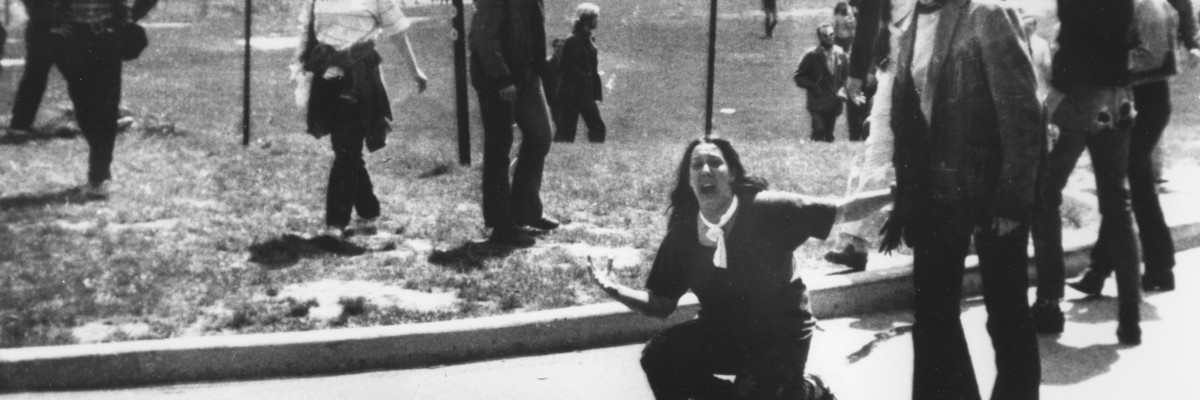
The late 60’s and early 70’s was a tumultuous period of American history to live through. The Cold War, the war in Vietnam, the civil rights movement, and political assassinations provided a perfect storm of conflict that pitted generations of Americans against each other. All of this frustration, anger, and unrest came to a head in Ohio – on the college campus of Kent State in May of 1970.
It’s known as the Kent State Massacre, the Kent State Shootings, or the May 4 Massacre and here’s what you should know.
“Tin soldiers and Nixon’s coming. This Summer I hear the drumming. 4 Dead in Ohio.” – Lyrics from Neil Young’s “Ohio“
1968 Richard Nixon is elected President with the promise of ending the war in Vietnam. In 1969 the war is not just continuing, but growing into Cambodia.
In November 1969, the My Lai Massacre by American troops of between 347 and 504 civilians in a Vietnamese village was exposed, leading to increased public opposition in the United States to the war.
The nature of the draft also changed in December 1969. It eliminated deferments allowed in the prior draft process, affecting many college students and teachers. In other words, if you were of military age, you may be heading over there.
Across the country, campuses erupted in protests in what Time called “a nation-wide student strike,” setting the stage for the events of early May 1970.
April 30th, 1970 (Four days before the massacre) – President Nixon announces to the nation that the “Cambodian Incursion” had been launched by United States combat forces – marking an escalation of the already deeply unpopular war.
May 1st – 500 students at Kent State University protest the Cambodian Incursion, burying a copy of the Constitution – symbolizing Nixon killing it. That night, a riot occurs in town, leading to bricks being thrown at police, fires set, and a bank window being smashed – setting of an alarm. The Mayor of Kent declares an emergency. The police use tear gas to disperse the crowd. A major protest is scheduled for May 4.

Burying the Constitution at the Victory Bell at Kent State
Courtesy of 1970 Valley News-Dispatch.
May 2nd – Rumors begin to swirl that revolutionaries are in Kent, and will attempt to escalate the unrest. Kent Mayor LeRoy Satrom and Ohio Governor Jim Rhodes ask for help, and receive it from the Ohio National Guard. However the guard doesn’t arrive until 10pm that night.
By that time, protesters have already set fire to the ROTC building on campus. The large crowd is cheering and throwing rocks at the firefighters attempting to put out the blaze. The fire hose is slashed, and the National Guard uses tear gas once again to disperse the crowd.
May 3rd – Mayor Satrom holds a press conference and furiously pounds on the podium, calling the protesters “un-american, revolutionaries set on destroying higher education in Ohio.”
“They’re the worst type of people that we harbor in America. Now I want to say this. They are not going to take over campus. I think that we’re up against the strongest, well-trained, militant, revolutionary group that has ever assembled in America.” Mayor Satrom
The Mayor issues a curfew. At 8:45pm students stage a sit-in, requesting a meeting with the mayor and University president, Robert White. The National Guard attempts to enforce the curfew, bayoneting some students.
May 4th (Massacre Day) – 2000 protesters show up on campus, despite attempts by officials to cancel the rally. The victory bell is rung, signaling the beginning of the protest. The National Guard read a directive to the crowd, instructing them to disperse. The Army jeep is pelted with rocks and retreats.
The Guard issues another unheeded warning a few hours later, this time firing tear gas at the crowd. The gas has little effect due to wind, blowing it back at the guardsman who are wearing gas masks. More rocks are hurled at police to the chants of “Pigs off campus!”
The guardsman form a line with their bayonets drawn and begin slowly marching towards the crowd. However, they get themselves into a situation where they are surrounded on three sides by protesters.
At 12:24 pm, according to eyewitnesses, Sgt. Myron Pryor turned and began firing at the students with his .45 pistol. A number of guardsmen nearest the students also turned and fired their rifles at the students. In all, 29 of the 77 guardsmen claimed to have fired their weapons, using a final total of 67 rounds of ammunition. The shooting was determined to have lasted only 13 seconds.
“The firing stopped. I lay there maybe 10 or 15 seconds. I got up, I saw four or five students lying around the lot. By this time, it was like mass hysteria. Students were crying, they were screaming for ambulances. I heard some girl screaming, ‘They didn’t have blank, they didn’t have blank.’ No, they didn’t.” – Eyewitness
Four students were killed. Nine were wounded. Two of the four students killed were not participating in the protest and were walking between classes.
The question of why the shots were fired remains widely debated. Many guardsman later testified they were in fear of their lives. Another claimed a sniper took a shot at them. The President’s Commission on Campus Unrest avoided probing the question of why the shootings happened. It concluded that “the indiscriminate firing of rifles into a crowd of students and the deaths that followed were unnecessary, unwarranted, and inexcusable.”
Immediately after the shootings, some students were clamoring for an all out attack on the guardsman. Geology Professor Glenn Frank pleads with the students,
“I don’t care whether you’ve never listened to anyone before in your lives. I am begging you right now. If you don’t disperse right now, they’re going to move in, and it can only be a slaughter. Would you please listen to me? Jesus Christ, I don’t want to be a part of this … “
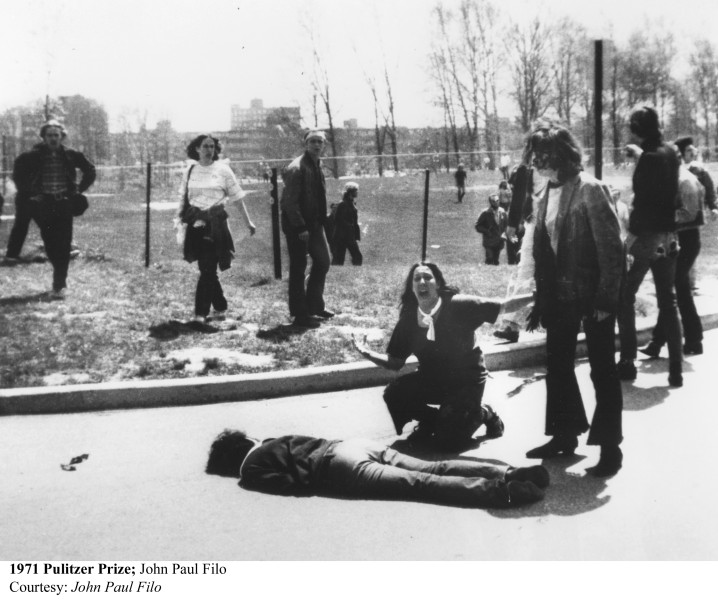
Pulitzer Prize winning photography of Mary Ann Vecchio screams as she kneels over the body of Jeffrey Miller.
Courtesy of 1970 Valley News-Dispatch.
The Aftermath
Just 5 days later, 100,000 people protest the war and the student killings in Washington, DC. President Nixon is brought to Camp David as a safety precaution.
“The city was an armed camp. The mobs were smashing windows, slashing tires, dragging parked cars into intersections, even throwing bedsprings off overpasses into the traffic down below. This was the quote, student protest. That’s not student protest, that’s civil war.” – Ray Price, Nixon speechwriter.
The military was called in to protect the President from angry student protesters.
“The 82nd Airborne was in the basement of the executive office building, […] they’re lying on the floor leaning on their packs and their helmets and their cartridge belts and their rifles cocked and you’re thinking, ‘This can’t be the United States of America. This is not the greatest free democracy in the world. This is a nation at war with itself.'” – Counsel to the President, Charles Colson
Nixon’s reaction to the killings is seen as callous. Three days before the shootings, Nixon himself had talked of “bums” who were anti war protestors on US campuses, to which the father of Allison Krause, one of the victims, stated on national TV “My child was not a bum.”
Photos courtesy of 1970 Valley News-Dispatch.




